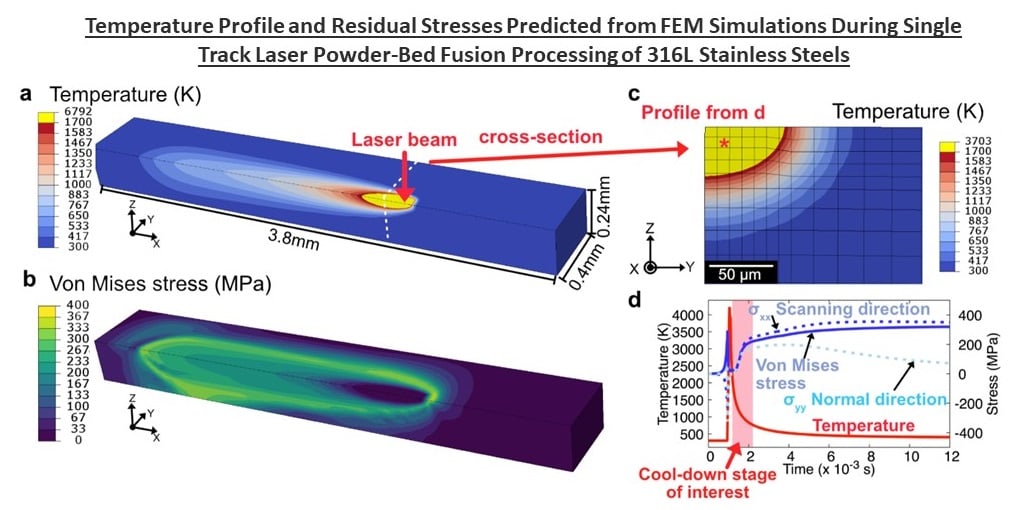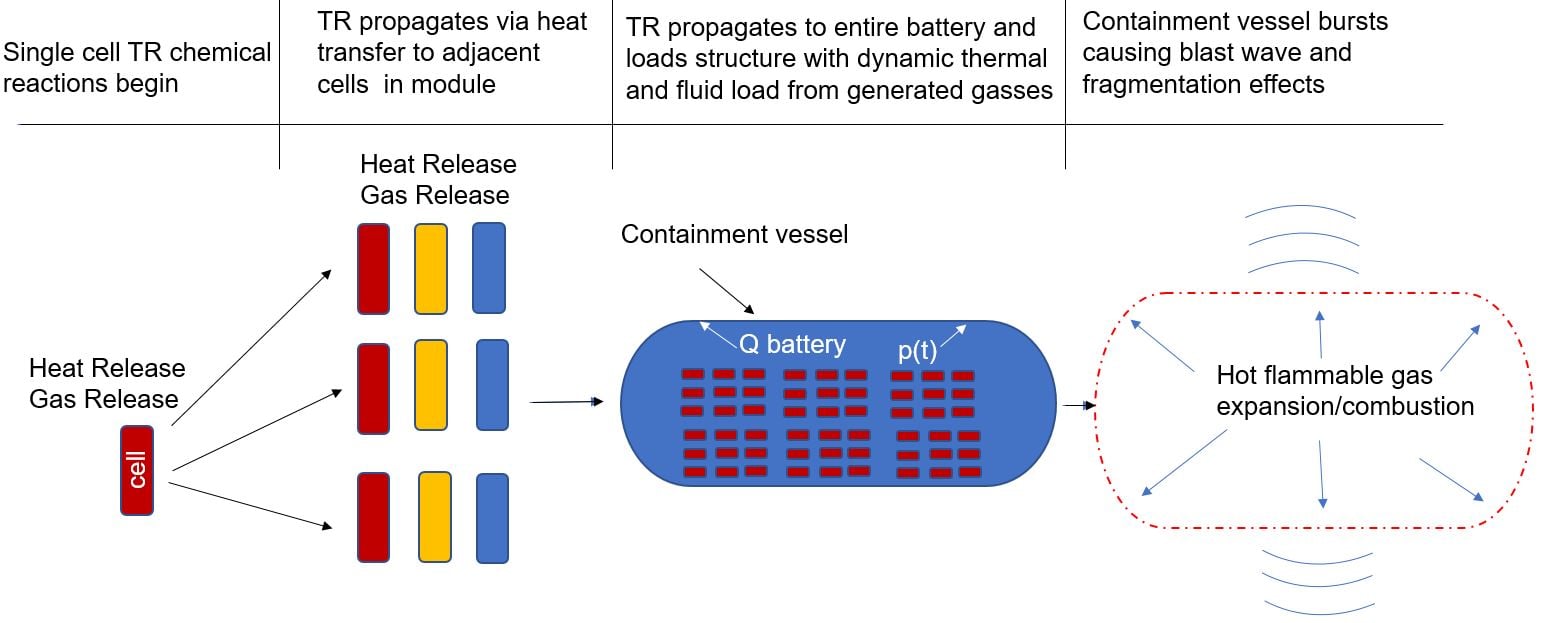Research
Research Videos
From Limited Sensor Data to the Deformation Field in Metals: A Coupled Machine Learning, Physics Based Modeling and In Situ Experimental Approach
In the realm of plastic deformation in materials, the far-field boundary conditions, encompassing parameters such as strength and plastic strain, are essentially an amalgamation of contributions from myriad local sources dispersed throughout the material volume. When these local sources are activated, they induce abrupt localized changes in inelastic strain, thereby giving rise to the generation of high-frequency stress waves within the material. These stress waves, referred to as acoustic emissions (AE), can be effectively detected using surface sensors.
In the context of metals, AE measurements during deformation offer a unique, straightforward, and cost-effective in situ method for quantifying the statistical aspects of defect dynamics. However, the intricate interplay of AE between overlapping deformation mechanisms in metals, such as those between different dislocation mechanisms or the interactions between dislocation plasticity and fracture, remains a challenging frontier in AE studies. This is primarily due to the complexities associated with identifying and decoding the distinct AE signatures corresponding to each mechanism.
Consequently, our project is focused on the development of a coupled experimental setup that integrates in situ scanning electron microscopy micro-compression experiments with AE measurements. The objective is to precisely quantify the AE linked to dislocation slip and fracture at the microscale. In parallel, we are actively engaged in constructing a “digital twin” of AE by employing large-scale 3D discrete dislocation elastodynamic simulations. These simulations are designed to forecast the AE surface waves associated with various elementary dislocation mechanisms, as well as the AE signals arising from complex slip avalanches that occur during the deformation of single crystal Ni micropillars.
To enhance the depth of our insights, we have harnessed Machine Learning techniques, enabling us to predict the underlying deformation mechanisms from the AE surface measurements. This multifaceted approach will significantly advance our understanding of plastic deformation processes and contribute to the development of predictive models for materials behavior in response to external forces.
Atomistic characterization of dislocation interactions with Alpha-Beta interfaces and Beta lathes in two phase Ti alloys
The primary source of strengthening in two-phase Titanium alloys is the hindrance of dislocation motion by alpha-beta interfaces. Several key factors contribute to this interface’s strength against gliding dislocations, including the misfit dislocation structure at the interface, the mismatch in elastic constants across the interface, the elastic interaction stresses induced at the interface by far-field applied stresses, and the residual dislocation content left at the interface as gliding dislocations traverse it. These factors collectively determine the strength of the alpha-beta interface, but our understanding of the mechanisms governing slip transmission across this interface remains incomplete.
In this project, we employ a unique set of extensive atomistic simulations to systematically examine the influence of interface structure, elastic interaction stresses, and residual dislocation content on the interface’s strength against gliding dislocations. We also investigate how this strength varies concerning the identity and character of the gliding dislocations and the glide plane. These simulations are conducted for compositions that correspond to engineering two-phase Ti alloys, specifically, Ti-64 and Ti-6422.
This research endeavor holds the potential to provide valuable insights that will inform the design of advanced two-phase alpha-beta Ti alloys with exceptional high-temperature mechanical properties, particularly for aerospace applications.
The interplay of local chemistry and plasticity in controlling microstructure formation and the mechanical properties of additively manufactured alloys.
Additive manufacturing (AM) of metallic components holds significant promise over traditional metallurgical manufacturing methods due to its exceptional design flexibility spanning multiple length scales and precision, combined with a remarkable array of mechanical properties. However, a central challenge for this groundbreaking technology is to establish a clear link between microstructure and mechanical attributes.
A crucial preliminary step is to discern the influence of the processing path on the evolving microstructure. To address this, our project employs a comprehensive approach, melding experimental investigations, finite element analyses of the AM process, and large-scale three-dimensional discrete dislocation dynamics simulations. Our aim is to unravel the intricate mechanisms that underlie the creation of distinctive microstructures in additively manufactured metallic alloys. Concurrently, we explore how these microstructures impact the subsequent mechanical properties of these alloys.
Through these endeavors, we seek to advance the fundamental understanding of AM technology and its implications on material properties, paving the way for innovation and advancement in this field.
Deformation and Failure of Underwater Vehicles due to Thermal Runaway Events of on Board Lithium-Ion Battaries
Underwater vehicles, electric ground vehicles, and aircrafts are increasingly turning to lithium-ion batteries (LIBs) to enhance their performance, surpassing the capabilities of traditional alkaline, lead acid, or nickel cadmium batteries. While LIBs offer outstanding energy density advantages, they also present a substantial safety concern when it comes to thermal runaway (TR) events. Presently, there is no widely accepted computational methodology for assessing the impact of a lithium-ion battery (LIB) TR event on a confining structure, known as a battery canister.
Our research focuses on the development of innovative coupling techniques, material models, and validated reduced order methods to accurately simulate the intricacies of a TR event within a confined structure. This is a multifaceted challenge involving a spectrum of physical phenomena, including chemical reactions, heat transfer, fluid dynamics, and structural mechanics, encompassing high strain rates, thermal effects, plasticity, and fracture. The goal is to numerically predict critical parameters such as burst pressure, shockwave magnitude, and the potential for fragmentation hazards, providing an a priori risk assessment for a given LIB design.
The current industry practice relies on conducting a series of destructive tests to evaluate the hazards associated with a runaway event. However, this approach is costly and time-consuming, particularly when integrating LIBs into new systems. By establishing a robust numerical capability, engineers can design safer systems that minimize risks to adjacent equipment and personnel in the event of a thermal runaway. This not only accelerates the adoption of LIBs but also ensures the maintenance of stringent safety standards.







